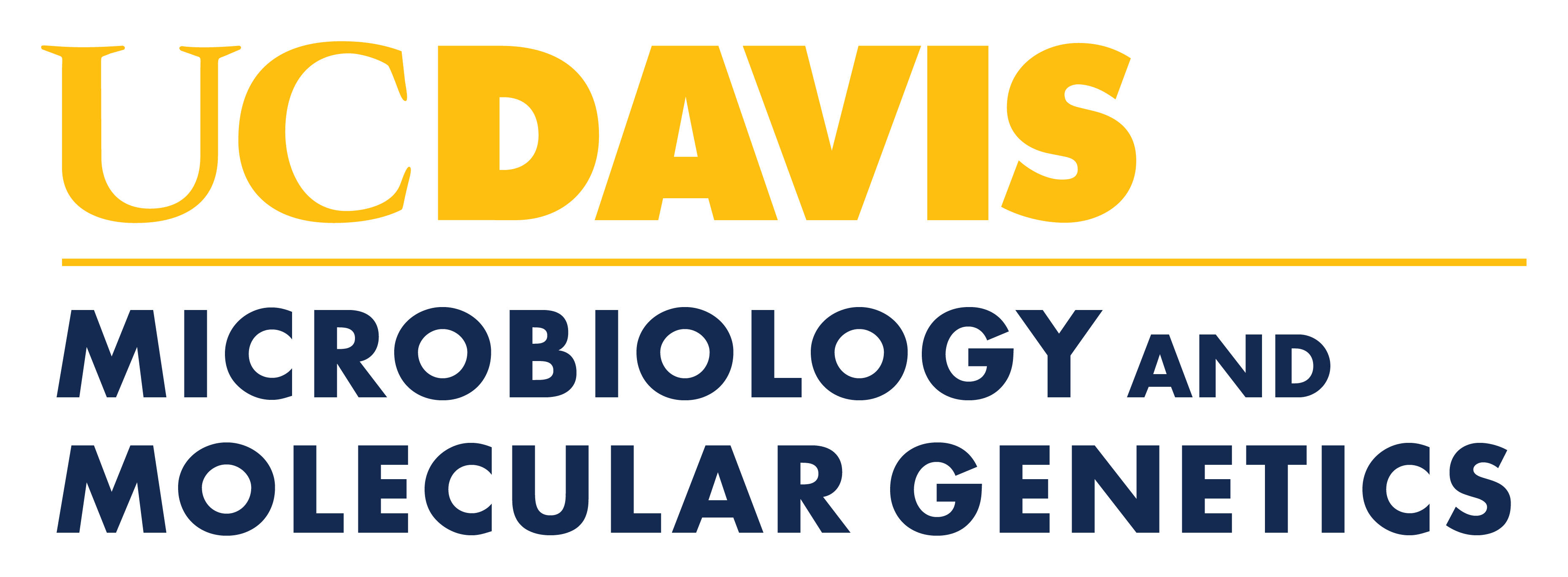The Early Years In The College Of Agriculture
In 1922 Cortland S. Mudge became the first bacteriologist to be appointed in the Department of Dairy Industry (later called Dairy Science and finally Food Science and Technology). Thus he can be called the father of microbiology at Davis. For some years he alone offered all the instruction in microbiology at Davis: one course in general bacteriology taken by generations of students. After World War II, Mudge was joined by Mortimer P. Starr, whose interest was plant disease bacteria, and Donald M. Reynolds, who had assisted Selman Waksman in the discovery of streptomycin. This faculty of three constituted the Department of Bacteriology in the Department of Dairy Science.
Graduate instruction in microbiology began in the 1940s. At this time the UC Academic Senate was organized into Northern and Southern Departments. Rules provided for Graduate Groups, membership which consisted of faculty with common interests, irrespective of department or campus. The Graduate Group in Microbiology included faculty not only from various units at Davis (Dairy Science, Plant Pathology, Food Science, and Veterinary Medicine), but also from the Berkeley and San Francisco campuses. Food scientists Emil Mrak and Herman Phaff at Davis and H.A. Barker, Roger Stanier, and Michael Doudoroff of the Berkeley campus were influential in guiding the development of Davis graduate students. This mode of graduate instruction continued until after the Academic Senate reorganized by campus in 1964.
Department of Bacteriology (College of Letters and Science)
In 1952, after the College of Letters and Science was established at Davis, bacteriology became a department in the new college. Allen G. Marr joined the faculty in 1952 and together with Mudge, Starr, and Reynolds, developed the courses and curriculum that constituted the undergraduate major in bacteriology. Graduate instruction, however, remained the province of the Graduate Group with the continued active participation of members from the Berkeley campus.
Growth of the Department
With Mudge’s retirement in 1956, Robert E. Hungate, distinguished by his pioneering studies on cultivation of strict anaerobes and rumen microbiology, joined the Department of Bacteriology as its chair. His presence materially strengthened the department’s growing reputation as a leader in microbial physiology and diversity. Recognizing the increasing importance of the then emerging field of microbial genetics, Monica M. Riley, a student of Arthur Pardee, was recruited into the department in 1960. In 1962 Hungate stepped down as chair, to be replaced by John L. Ingraham, who transferred into the department from the Department of Viticulture and Enology.
With the growth of enrollments at Davis, faculty recruitment proceeded at a more rapid pace. Donald Kessler, a microbial geneticist, joined the department in 1967; Mark Wheelis, microbial physiologist (now history and control of biological weapons) in 1970; David Pratt, a virologist, in 1970; Sydney Kustu, microbial physiologist (bacterial gene regulation), in 1973; Paul Baumann, general microbiologist, in 1973; JaRue S. Manning, virologist, in 1974; Stanley W. Artz, microbial physiologist, in 1976; John C. Meeks, a microbial physiologist, in 1977. More recent additions include Martin Privalsky, transcriptional regulation, in 1984; Douglas Nelson, microbial ecology, in 1985; Daniel Klionsky, yeast cell biology, in 1990: Michele Igo, microbial genetics, in 1990; Stephen Kowalczykowski, microbial molecular genetics, in 1991; Merna Villarejo, microbial physiology, in 1993; Mitchell Singer, microbial genetics, in 1995; Wolf-Dietrich Heyer, DNA repair and recombination, in 1998; Kazuhiro Shiozaki, signal transduction in yeast, in 1998; Valley Stewart, microbial genetics, in 1998; Rebecca Parales, bacterial aromatic hydrocarbon degradation and chemotaxis, in 2003; Neil Hunter, chromosome biology, in 2003; Su-Ju Lin, calorie restriction and aging in 2003; Scott Dawson, Giardia biology and genomics, in 2006; Lorena Navarro, Yersina host-microbe interactions, in 2008; and Lifeng Xu, telomere biology, in 2008.
The term “bacteriology,” the department’s name and the one used almost universally by similar departments, began to sound too restrictive and old fashioned by the 1970s and 1980s, and a wave of name changes ensued. This department followed the trend in 1988, changing its name to the Department of Microbiology. With the reorganization of the Division of Biological Sciences, the department became the Department of Microbiology in 1992.
History of the College of Biological Sciences and UC Davis.
